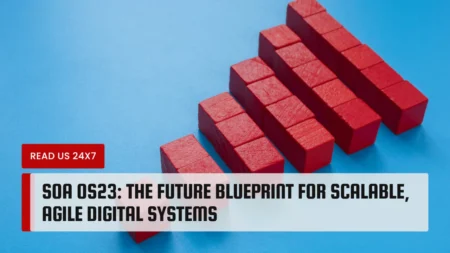Blockchain technology has evolved significantly since the inception of Bitcoin in 2009. Initially designed as a decentralized digital currency, Bitcoin’s success paved the way for numerous blockchain projects. However, as blockchain adoption grew, it became evident that scalability was a pressing issue that needed to be addressed. This article delves deep into the subject of scaling blockchain solutions, comparing Bitcoin, the pioneer of blockchain, with Harmony, a blockchain platform that places scalability at the forefront of its design. Digital assets are scaling and if you are not educated and informed enough, sorry to say, but you are missing out. Visit https://bitalpha-ai.io/ now and start learning now!
Scalability Challenges in Blockchain
Explaining the Scalability Trilemma
Blockchain technology faces a well-known scalability trilemma: achieving decentralization, security, and scalability simultaneously is challenging. As a blockchain network scales, it often compromises one or more of these aspects. Finding the right balance is essential.
Discussing the Limitations of Bitcoin
Bitcoin, with its Proof of Work (PoW) consensus mechanism, has faced scalability challenges for years. PoW requires miners to solve complex mathematical puzzles, which becomes increasingly energy-intensive and time-consuming as the network grows. This limits Bitcoin’s transaction throughput and increases fees.
Introducing Harmony as a Solution to Scalability Issues
Harmony, a relatively newer entrant, has set out to tackle the scalability issue head-on. It employs an innovative consensus mechanism known as Effective Proof of Stake (EPoS) and utilizes sharding, which partitions the network into smaller segments (shards) to enhance scalability. Harmony’s approach aims to maintain decentralization while significantly increasing transaction throughput.
Bitcoin: The Pioneering Blockchain
Historical Background of Bitcoin
Bitcoin was introduced by an anonymous entity known as Satoshi Nakamoto in 2008. Its primary purpose was to create a peer-to-peer electronic cash system that eliminated the need for intermediaries like banks.
How Bitcoin Achieves Consensus with PoW
Bitcoin’s consensus mechanism, PoW, involves miners competing to solve cryptographic puzzles. The first one to solve it adds a new block to the blockchain and is rewarded with newly minted bitcoins. However, PoW’s resource-intensive nature limits Bitcoin’s scalability.
Discussing the Lightning Network as Bitcoin’s Scalability Solution
Recognizing its scalability limitations, Bitcoin introduced the Lightning Network, a second-layer solution. It enables off-chain transactions and reduces the congestion on the main Bitcoin blockchain. While promising, the Lightning Network is not without challenges, including concerns about centralization and security.
Analyzing Bitcoin’s Current Scalability Issues
Bitcoin continues to grapple with scalability issues despite efforts like the Lightning Network. Transaction fees can still be high during periods of high demand, and confirmation times may be longer. These challenges hinder Bitcoin’s ability to serve as a global payment network.
Harmony: A Scalability-Focused Blockchain
Introduction to Harmony as a Blockchain Platform
Harmony was founded in 2018 with a focus on scalability and decentralization. It employs EPoS, a consensus mechanism that combines the benefits of Proof of Stake (PoS) with practical Byzantine Fault Tolerance (pBFT), enhancing security and scalability.
Harmony’s Unique Consensus Mechanism – EPoS
EPoS minimizes energy consumption while maintaining security. Validators are chosen based on their stake and reputation, reducing the need for resource-intensive mining. This results in faster block confirmations and lower fees.
Deep Dive into Harmony’s Sharding Approach for Scalability
Sharding is a key innovation in Harmony’s design. The network is divided into smaller shards, each capable of processing its transactions and smart contracts independently. This horizontal scaling approach drastically increases Harmony’s transaction throughput.
Highlighting Harmony’s Innovations in Cross-Shard Communication
One of the challenges of sharding is ensuring seamless communication between shards. Harmony employs a secure and efficient cross-shard communication protocol, enabling the transfer of assets and information between shards.
A Comparative Analysis
Performance Metrics: Throughput, Latency, and Energy Consumption
Comparing Bitcoin and Harmony’s performance metrics reveals stark differences. Harmony’s sharded architecture allows for high throughput and low latency, making it suitable for various use cases, including DeFi and NFTs. Bitcoin’s PoW, on the other hand, results in lower throughput and higher energy consumption.
Security and Decentralization Aspects
Both Bitcoin and Harmony prioritize security and decentralization. Bitcoin’s PoW has demonstrated robust security over the years, but concerns about mining centralization have emerged. Harmony’s EPoS enhances security while maintaining decentralization through a large network of validators.
Use Cases for Bitcoin and Harmony Based on Scalability
Bitcoin remains a strong store of value and a digital gold, while Harmony’s scalability makes it suitable for applications requiring high-speed, low-cost transactions, such as decentralized finance (DeFi) and non-fungible tokens (NFTs).
Challenges and Criticisms
Discussing Criticisms Against Harmony’s Sharding Approach
Critics argue that sharding can introduce complexities and potential vulnerabilities. Harmony must address these concerns to maintain its reputation as a secure and scalable blockchain.
Addressing Concerns About Centralization in Bitcoin’s Lightning Network
The Lightning Network’s reliance on payment channels has led to concerns about centralization, as large nodes dominate the network. Bitcoin developers need to address these issues to ensure the network’s long-term success.
Future Scalability Challenges for Both Projects
As both Bitcoin and Harmony continue to grow, they will face evolving scalability challenges. Ongoing research and development are essential to address these challenges and maintain their competitiveness.
Conclusion
In conclusion, the quest for blockchain scalability is ongoing, with both Bitcoin and Harmony taking distinct approaches. Bitcoin, as the pioneer, remains a secure store of value, while Harmony’s focus on scalability positions it as a high-performance blockchain platform. As the blockchain landscape evolves, it is crucial to appreciate the trade-offs and innovations that different projects bring to the table, emphasizing the importance of adaptability and continuous development in the blockchain space.








